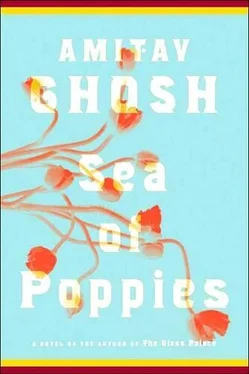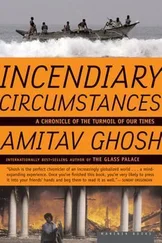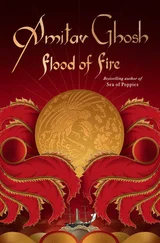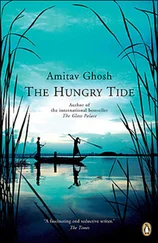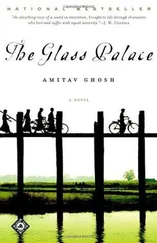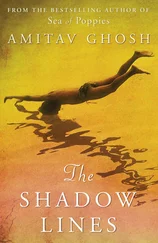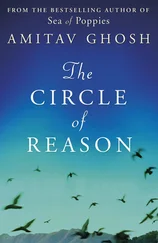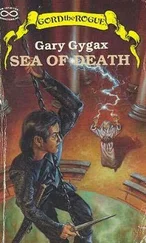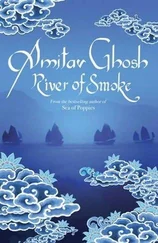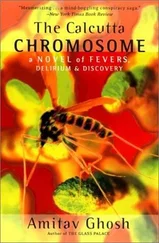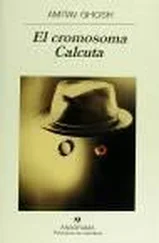Amitav Ghosh
Kolkata
2008
Words! Neel was of the view that words, no less than people, are endowed with lives and destinies of their own. Why then were there no astrologers to calculate their kismet and make predictions about their fate? The thought that he might be the one to take on this task probably came to him at about the time when he was first beginning to earn his livelihood as a linkister – that is to say, during his years in southern China. From then on, for years afterwards, he made it his regular practice to jot down his divinations of the fate of certain words. The Chrestomathy , then, is not so much a key to language as an astrological chart, crafted by a man who was obsessed with the destiny of words. Not all words were of equal interest, of course, and the Chrestomathy , let it be noted, deals only with a favoured few: it is devoted to a select number among the many migrants who have sailed from eastern waters towards the chilly shores of the English language. It is, in other words, a chart of the fortunes of a shipload of girmitiyas: this perhaps is why Neel named it after the Ibis .
But let there be no mistake: the Chrestomathy deals solely with words that have a claim to naturalization within the English language. Indeed the epiphany out of which it was born was Neel's discovery, in the late 1880s, that a complete and authoritative lexicon of the English language was under prepara tion: this was, of course, the Oxford English Dictionary (or the Oracle, as it is invariably referred to in the Chrestomathy ). Neel saw at once that the Oraclewould provide him with an authoritative almanac against which to judge the accuracy of his predictions. Although he was already then an elderly man, his excitement was such that he immediately began to gather his papers together in preparation for the Oracle's publication. He was to be disappointed, for decades would pass before the Oxford English Dictionary finally made its appearance: all he ever saw of it was a few of the facsicules that appeared in the interim. But the years of waiting were by no means wasted: Neel spent them in collating his notes with other glossaries, lexicons and word-lists. The story goes that in the last years of his life his reading consisted of nothing but dictionaries. When his eyesight began to fail, his grandchildren and great-grandchildren were made to perform this service for him (thus the family coinage 'to read the dicky', defined by Neel as 'a gubbrowing of last resort').
On his deathbed, or so family legend has it, Neel told his children and grandchildren that so long as the knowledge of his words was kept alive within the family, it would tie them to their past and thus to each other. Inevitably, his warnings were ignored and his papers were locked away and forgotten; they were not to be retrieved till some twenty years later. The family was then in turmoil, with its many branches at odds with each other, and its collective affairs headed towards ruin. It was then that one of Neel's granddaughters (the grandmother of the present writer) remembered his words and dug out the old band-box that contained Neel's jottings. Coincidentally, that was the very year the Oraclewas finally published – 1928 – and she was able to raise the money, by joint family subscription, to acquire the entire set. Thus began the process of disinterring Neel's horoscopes and checking them against the Oracle's pronouncements – and miraculously, no sooner did the work start than things began to turn around, so that the family was able to come through the worldwide Depression of the 1930s with its fortunes almost undiminished. After that never again was the Chrestomathy allowed to suffer prolonged neglect. By some strange miracle of heredity there was always, in every decade, at least one member of the family who had the time and the interest to serve as wordy-wallah, thus keeping alive this life-giving conversation with the founder of the line.
The Chrestomathy is a work that cannot, in principle, ever be considered finished. One reason for this is that new and previously unknown word-chits in Neel's hand continue to turn up in places where he once resided. These unearthings have been regular enough, and frequent enough, to confound the idea of ever bringing the work to completion. But the Chrestomathy is also, in its very nature, a continuing dialogue, and the idea of bringing it to an end is one that evokes superstitious horror in all of Neel's descendants. Be it then clearly understood that it was not with any such intention that this compilation was assembled: it was rather the gradual decay of Neel's papers which gave birth to the proposal that the Chrestomathy (or what there was of it) be put into a form that might admit of wider circulation.
It remains only to explain that since the Chrestomathy deals exclusively with the English language, Neel included, with very few exceptions, only such words as had already found a place in an English dictionary, lexicon or word-list. This is why its entries are almost always preceded by either the symbol of the Oracle(a +) or the names of other glossaries, dictionaries or lexicons; these are, as it were, their credentials for admittance to the vessel of migration that was the Chrestomathy . However, the power to grant full citizenship rested, in Neel's view, solely with the Oracle(thus his eagerness to scrutinize its rolls). Once a word had been admitted into the Oracle's cavern, it lost the names of its sponsors and was marked forever with its certificate of residence: the symbol +. 'After the Oraclehas spoken the name of a word, the matter is settled; from then on the expression in question is no longer (or no longer only) Bengali, Arabic, Chinese, Hind. [1], Laskari or anything else – in its English
incarnation, it is to be considered a new coinage, with a new persona and a renewed destiny.'
These then are the simple conventions that Neel's descendants have adhered to, m arking a + upon every girmitiya that has found a place within the Oracle's tablets. Who exactly made these marks, and at what date, is now impossible to ascertain, so dense is the accretion of markings and jottings upon the margins of Neel's notes. Previous attempts to untangle these notations caused so much confusion that the present writer was instructed merely to bring the markings up to date, and in such a fashion that any interested party would be able to verify the findings in the most recent edition of the Oracle. This he has attempted to do to the best of his ability, although many errors have, no doubt, evaded his scrutiny.
When the mantle of wordy-major was placed upon the shoulders of the present writer, it came with a warning from his el ders: his task, they said, was not to attempt to re-create the Chrestomathy as Neel might have written it in his own lifetime; he was merely to provide a summary of a continuing exchange of words between generations. It was with these instructions in mind that he has laboured to preserve the timbre of Neel's etymological reflections: in the pages that follow, whenever quotation marks are used without attribution, Neel must be presumed to be the author of the passage in question.
***
abihowa/abhowa (*The Glossary [2] ):'A finer word for "climate" was never coined,' writes Neel, 'joining as it does the wind and the water, in Persian, Arabic and Bengali. Were there to be, in matters of language, such a thing as a papal indulgence the n I would surely expend mine in ensuring a place for this fine coinage.'
Читать дальше
